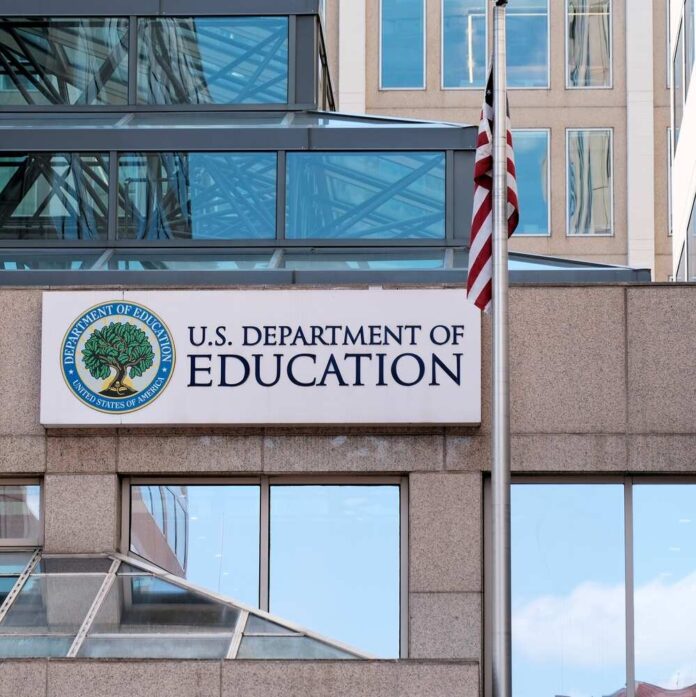
President Trump has finally signed an executive order to dismantle the Department of Education, fulfilling a 43-year-old Republican dream and setting the stage for a major battle over who controls America’s educational future.
At a Glance
- Trump signed an executive order directing Education Secretary Linda McMahon to begin dismantling the Department of Education
- The move aims to return control of education to states, local communities, and parents
- Nearly half of the department’s workforce has already been laid off
- Complete elimination requires congressional approval, but Trump can significantly reduce its size and scope
- Critics argue the department has spent $3 trillion without improving student achievement
A Conservative Vision Finally Realized
Ronald Reagan first proposed abolishing the Department of Education back in 1982, declaring, “We must cut out non-essential government spending.” For more than four decades, conservatives have consistently criticized the department, which was established under President Jimmy Carter in 1979, as an unnecessary federal overreach into matters better handled by states and local communities. Now, Trump has finally taken decisive action to begin dismantling this bureaucratic behemoth that many conservatives see as ineffective and ideologically driven.
The executive order instructs Education Secretary Linda McMahon to take immediate steps to close down the department, returning authority over education to states and local communities. This represents a major victory for supporters of limited government and federalism who have long argued that education decisions should be made closer to students and parents. The administration has already laid off approximately half of the department’s workforce, signaling that this is not merely symbolic but a genuine effort to scale back federal control.
JUST IN: President Trump Plans to Sign Executive Order to Dismantle Department of Education
President Donald Trump will sign an executive order on Thursday to begin dismantling the U.S. Department of Education, fulfilling a key campaign promise to return control of education to… pic.twitter.com/vT8RLNmeu0
— Kyle Becker (@kylenabecker) March 19, 2025
Why Conservatives Have Targeted the Department
Proponents of dismantling the Department of Education point to its dismal track record despite massive spending. The department has spent approximately $3 trillion since its creation without demonstrating meaningful improvements in student achievement. In fact, test scores have plummeted to historically low levels in recent years. Critics also argue that the department has increasingly focused on pushing ideological initiatives rather than improving educational outcomes for American students.
“Reagan correctly saw the philosophical and practical point that when you create an agency in Washington, it only grows in size and assumes additional responsibilities,” said Jonathan Butcher of the Heritage Foundation.
Under the Biden administration, substantial funds were directed toward diversity, equity, and inclusion (DEI) programs in schools, further fueling conservative criticism that the department has strayed from its core mission. A recent poll indicates that a majority of parents support reducing the federal department’s size and influence, suggesting growing frustration with federal education policies that seem disconnected from the concerns of families and local communities.
🚨 President Trump to Sign Executive Order Closing the Department of Education on March 20, 2025 🚨
With this historic move, education will return to the states, giving Virginia the opportunity to take full control and eliminate CRT/DEI/SEL once and for all.
In preparation,… pic.twitter.com/qo5RJGm2p1
— Dave LaRock For VA Governor (@DaveLaRockForVA) March 19, 2025
What Happens Next
While Trump’s executive order represents a significant step toward fulfilling his campaign promise, completely eliminating the Department of Education would require congressional action. The administration can, however, substantially narrow the department’s remit and break it up into smaller components. Essential functions like administering student loan programs and Pell grants will continue, according to White House plans, even as the department itself is largely dismantled.
“What I think is so unifying for the right is that there was always a sense that it offered a kind of one-stop access for the education ‘blob’ to influence policy,” noted Frederick Hess, director of education policy studies at the American Enterprise Institute.
Democrats and education establishment figures have already begun criticizing the move, arguing it endangers education funding and federal protections. Legal challenges are likely as the administration moves forward with its plans. The debate over the department’s future has become part of the broader cultural and political divide in American society, with conservatives seeing this as a necessary step toward educational freedom and increased parental choice, while opponents view it as an attack on public education itself.

















